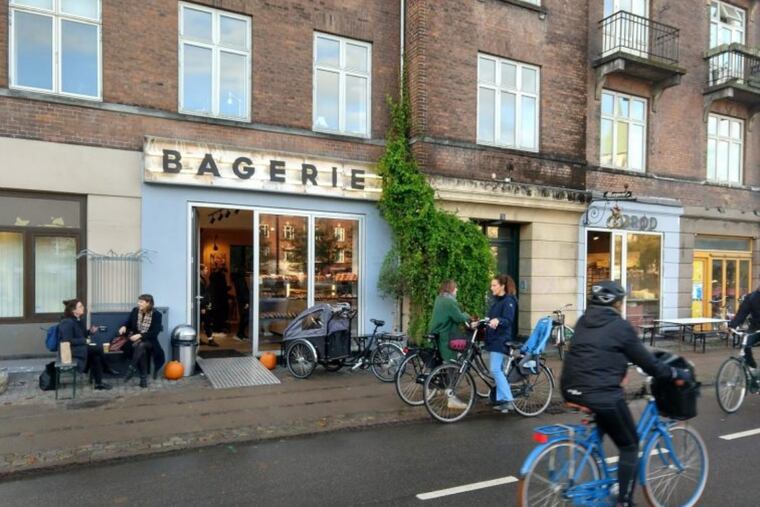What Philly can learn from Copenhagen’s response to the climate crisis | Opinion
If we steal a few good ideas from Copenhagen, we will still be Philadelphia.

I like Copenhagen. To be honest, I came into the relationship biased — I had heard quite a bit about Copenhagen’s livability and pleasantness. I went there for the first time two weeks ago to join Mayor Jim Kenney at the C40 World Mayors Summit and there are some things Copenhagen gets very right.
Copenhagen works. The city has been changing itself to respond to the climate crisis. City leaders have made biking, transit, and walking the most convenient ways to travel while taking travel lanes and parking away from the auto. Despite doubts that a modern city could ever work without the ability to drive easily, Copenhagen works. People get to work, kids get to school, and the week’s groceries are bought. In the meantime, a host of side benefits accrue to the residents of that city, all because of the low volume of car traffic.
Two paths diverge in the woods
But it wasn’t always this way.
Sixty years ago, Copenhagen was in the throes of the same turning point faced by all developed cities in the post-war period: Do they adopt the modernist vision of gleaming tower blocks and fast highways piloted by American cities? Surely, they must. All the experts said so. Copenhagen took a few half-hearted steps down that path and then did an about-face. They just couldn’t demolish much of their city and pave over their open space to accommodate the automobile. Since the 1970s, they have been on a different path — building high-quality public space, improving transit, constructing an extensive network of separated bike lanes, and (dare I say it) removing parking.
A year ago, the city of Philadelphia managing director’s Office of Transportation, Infrastructure, and Sustainability (OTIS) released CONNECT: Philadelphia’s Strategic Transportation Plan. CONNECT made the case that if we shift trips people make by car to more trips made by transit, walking, and biking, we will have a multitude of benefits as a city. Whether the cause is safety, equity, sustainability, health, or economic growth, all of these are enhanced by fewer cars driving around our streets and more travel by alternate modes.
What can Philadelphia learn from Copenhagen?
Copenhagen is one of many cities that shows this path works and is possible. They also show that it doesn’t happen overnight, and it doesn’t happen easily. It has taken Copenhagen two generations to get where it is now and they started with a fairly walkable, dense city. Copenhagen has had all the same community conversations, some of them very difficult, about changing how streets work that we are having now in Philadelphia. Change is difficult everywhere, and we are at a divisive time in our society. A good dose of listening to each other will help us get there. Copenhagen also shows that it is not free. All that high-quality infrastructure, while cheaper than building an interstate, costs something — construction, design, and really good community engagement.
I phileo you, Philadelphia
I love Philadelphia, in both the noun (I have a deep and abiding affection for you, Philadelphia) and the verb — I am dedicated to standing with you, my dear city, and helping you be the best Philly you can be. There are many things I think we actually get right that Copenhagen can learn from — I saw nary a street tree there, no Danish Gritty, and nowhere could I find a bacon, egg, and cheese lunch truck sandwich. We are an amazing city.
In my professional work at OTIS, I am occasionally confronted with, “Well, that’s fine, but this is Philadelphia,” in response to an idea for the improvement of our city. It is as if we are in danger of losing our identity if we adopt a policy from elsewhere. While this argument is not the highest form of disagreement, let’s take it head-on. Philadelphia is always changing, for better and for worse.
The incarnation of Philadelphia that William Penn founded, which was seen by the colonial leaders, that was polluted by late 19th-century industrialists, that was cleaned up by 1950s reformers, and the Philly of today are all very different from one another. Yet it is all Philly. In 1950, we had a half-million more people living in Philadelphia and only one-quarter of the automobiles. Restoring Philadelphia to a place where walking and transit are the default ways of getting around, and throwing in a bikeable city to boot, will result in a significant change, one that brings many benefits with few tradeoffs.
If we steal a few good ideas from Copenhagen, we will still be Philadelphia.
Christopher M. Puchalsky is the director of policy and strategic initiatives for the city of Philadelphia managing director’s Office of Transportation, Infrastructure, and Sustainability (OTIS). This piece originally appeared on PlanPhilly.com.